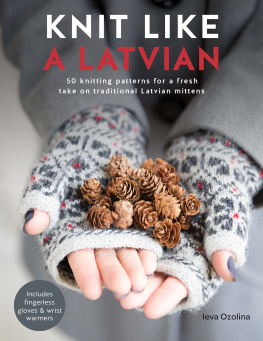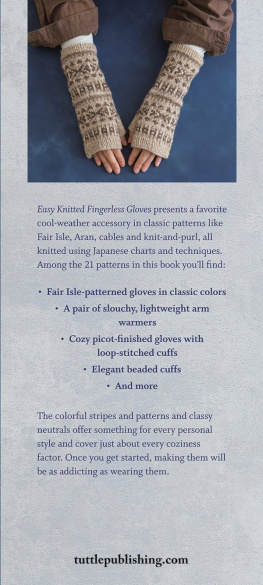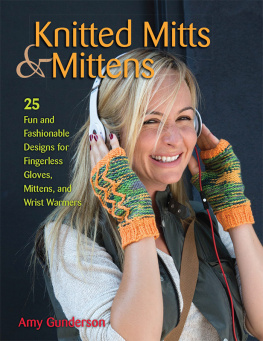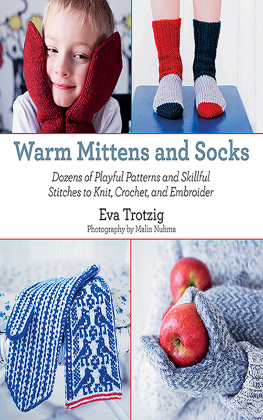Contents
Guide
KNIT LIKE
A LATVIAN
50 knitting patterns for a fresh take on traditional Latvian mittens
Ieva Ozolina

www.sewandso.co.uk
CONTENTS
INTRODUCTION
Mittens play an important role in Latvias culture and history. For several centuries they were the most common type of gift in the country, and are thought by some to have magical qualities.
Mittens were most often given as wedding gifts and the act of making mittens for special occasions still continues today. Traditionally, every bride-to-be was expected to fill a hope chest, and the most lavish chests contained several hundred pairs of handmade mittens. Mittens were also given to the family of the couple and anyone involved in organising the wedding. Nowadays, Latvian mittens, with their distinctive shape and diverse range of colours and patterns, are still a winter essential.
Most of the patterns are derived from Latvian mythology and incorporate various folk symbols (see ). Each knitted design has a different meaning and therefore every mitten has its own special story. Choose your favourites from this collection of 50 stylish patterns, and learn how to create your own beautiful mittens, along with coordinating fingerless gloves and wrist warmers.
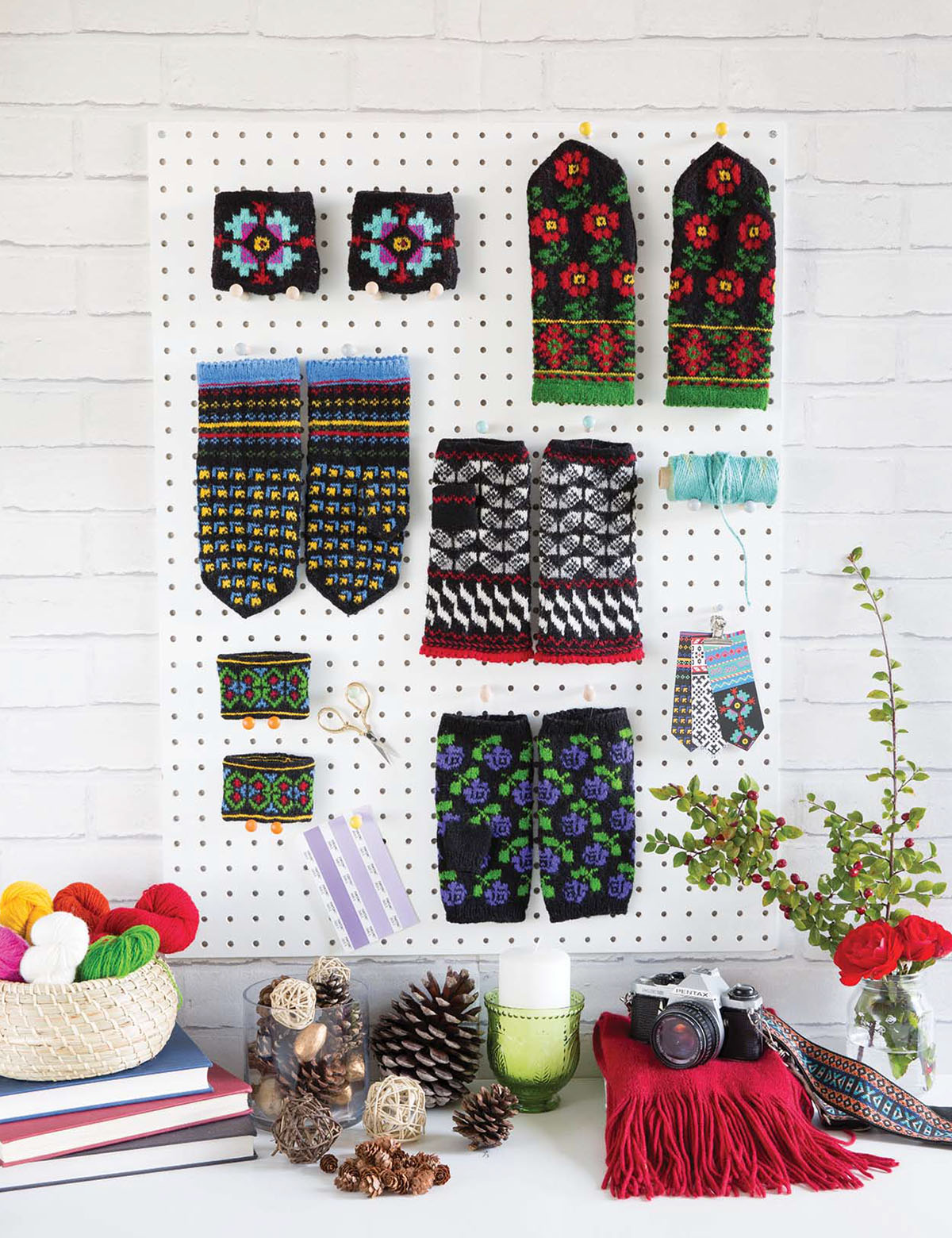
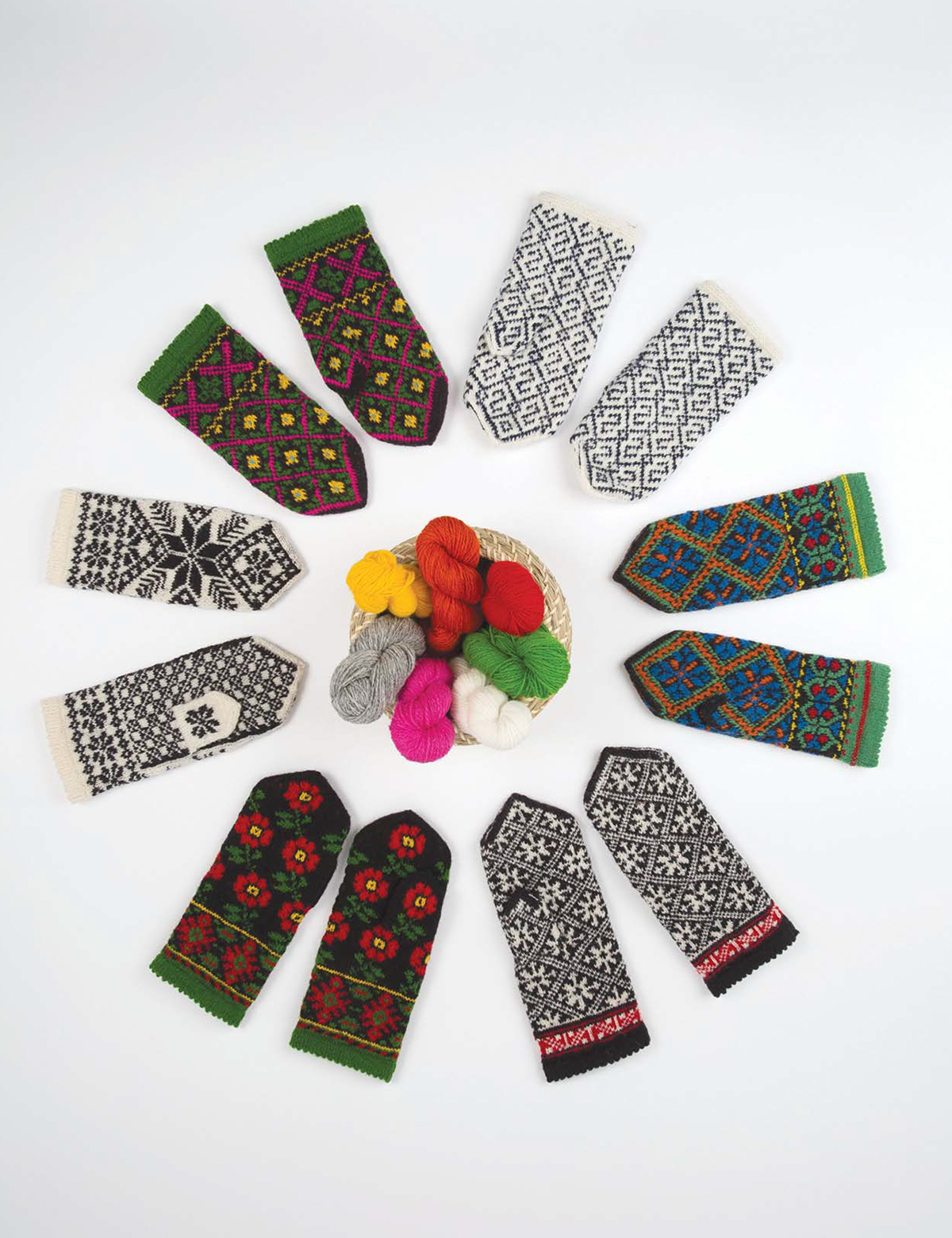
SYMBOLS GUIDE
Here are some of the most common symbols featured in Latvian mitten patterns, with an explanation of their meaning.
THE SIGN OF GOD
In ancient Latvian mythology, God was not just the father of the Gods, he was the essence of them all. This symbol represents the sky, as a roof over the Earth. |  |
THE SIGN OF MRA
The deity of earth and water and all the creatures within. Mra is the protector of women, especially mothers, and children. She is goddess of the Earth. |  |
THE SIGN OF LAIMA
Goddess of destiny. Laima determined the destiny of people. The name Laima derives from the word laime, which means happiness or luck. The sign is thought to bring luck. |  |
THE SIGN OF THE STAR
The star protects from evil. The simplest form of star is a basic cross shape, created by lines crossing at right angles, which symbolises fire and the light. A cross in Latvian folklore has six or eight stars and is one of the only surviving symbols to still honour the wintertime ceremonies and celebrations. |  |
THE SIGN OF AUSEKLIS (MORNING STAR)
The usher of the new day. Auseklis is thought to protect people from the forces of evil which roam at night. |  |
THE SIGN OF THE SUN
The Sun is the dominant feature of Gods heaven. The Sun is the goddess of fertility; patron goddess of the unlucky. The sign of the Sun is the most frequently used element in Latvian design. |  |
THE CROSS OF MRA (CROSS OF CROSSES)
Related to fire, house and productivity (fertility). It guards, blesses and brings happiness. |  |
ZALKTIS (SERPENT)
Zalktis was the guardian of wealth and well-being and therefore had to be protected and cared for. Zalktis was thought to be a sacred animal, thus had access to worldwide knowledge. It symbolises wiseness, ancient arts and sacred crafts. |  |
TOOLS AND MATERIALS
YARN
A natural 2-ply 100% wool is recommended as the best yarn to use and is also the yarn that has been traditionally used for Latvian mittens.
NEEDLES
For mitten knitting, five double-pointed metal needles are recommended in sizes 1.5mm-2.0mm (US sizes 000-0) and length 20cm (8in). Wooden or bamboo needles are not recommended as the small sizes are too fragile and can snap easily. Magic loop technique is not recommended either, because the mitten patterns are specifically designed for knitting with five double-pointed needles and would therefore be almost impossible to follow using the magic loop technique.
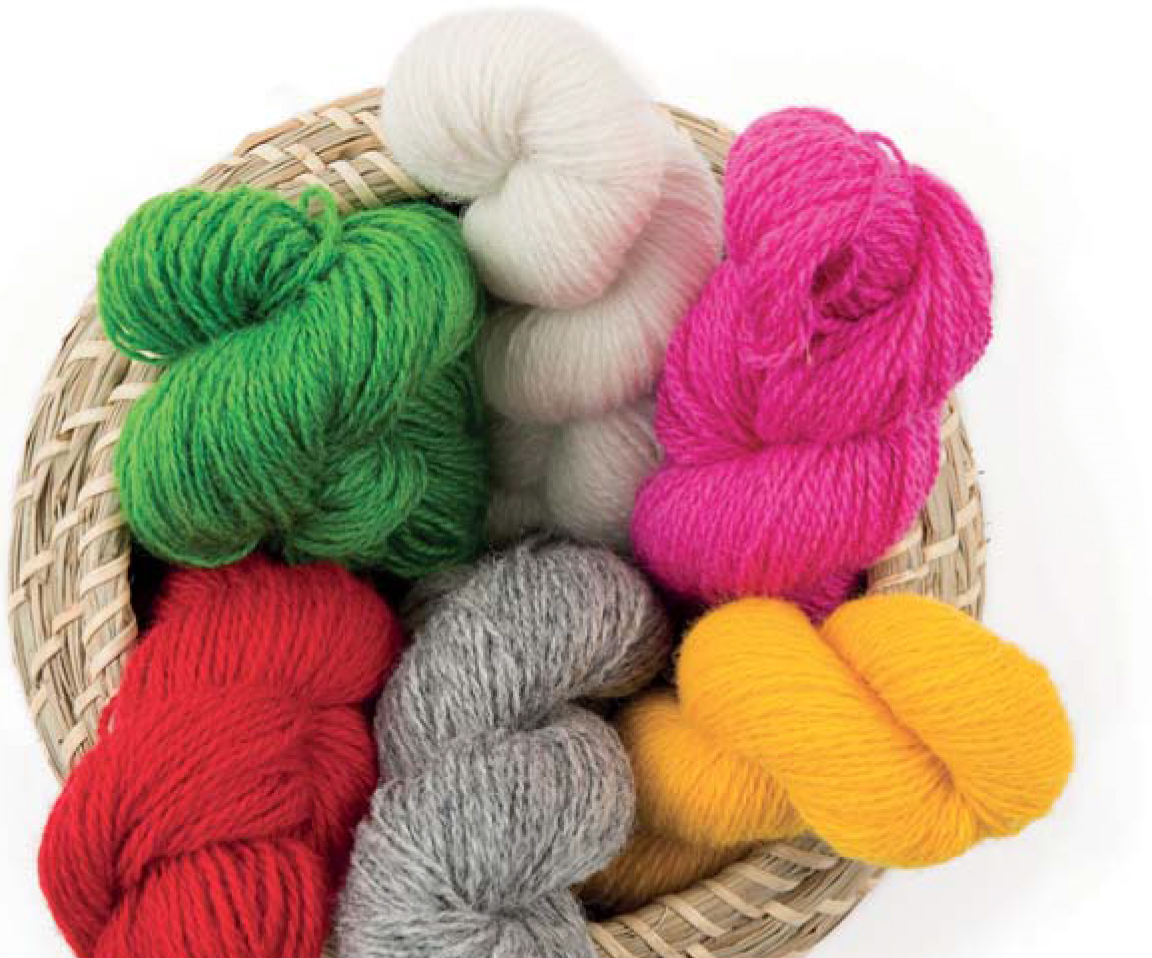
OTHER USEFUL EQUIPMENT
- A pair of sharp scissors for snipping yarn.
- A hard, see-through ruler for measuring tension (gauge).
- A tape measure for measuring the length of longer pieces of knitting.
- A tapestry/wool needle blunt ended (a pointy needle will split your yarn and spoil your knitting).
- Rust-proof pins with glass heads (for visibility) for measuring your tension squares and blocking your work.
- A blocking board or mitten blockers for blocking your work.
- Stitch markers to mark the start of the round, or to mark a pattern repeat.
- Row counter helpful to keep a note of how many rows youve knitted.
- Notebook and pen as an alternative to a row counter, or to make notes of your tension or any alterations or adaptations you make to a pattern.
- Project bag perfect for keeping your work and equipment in.
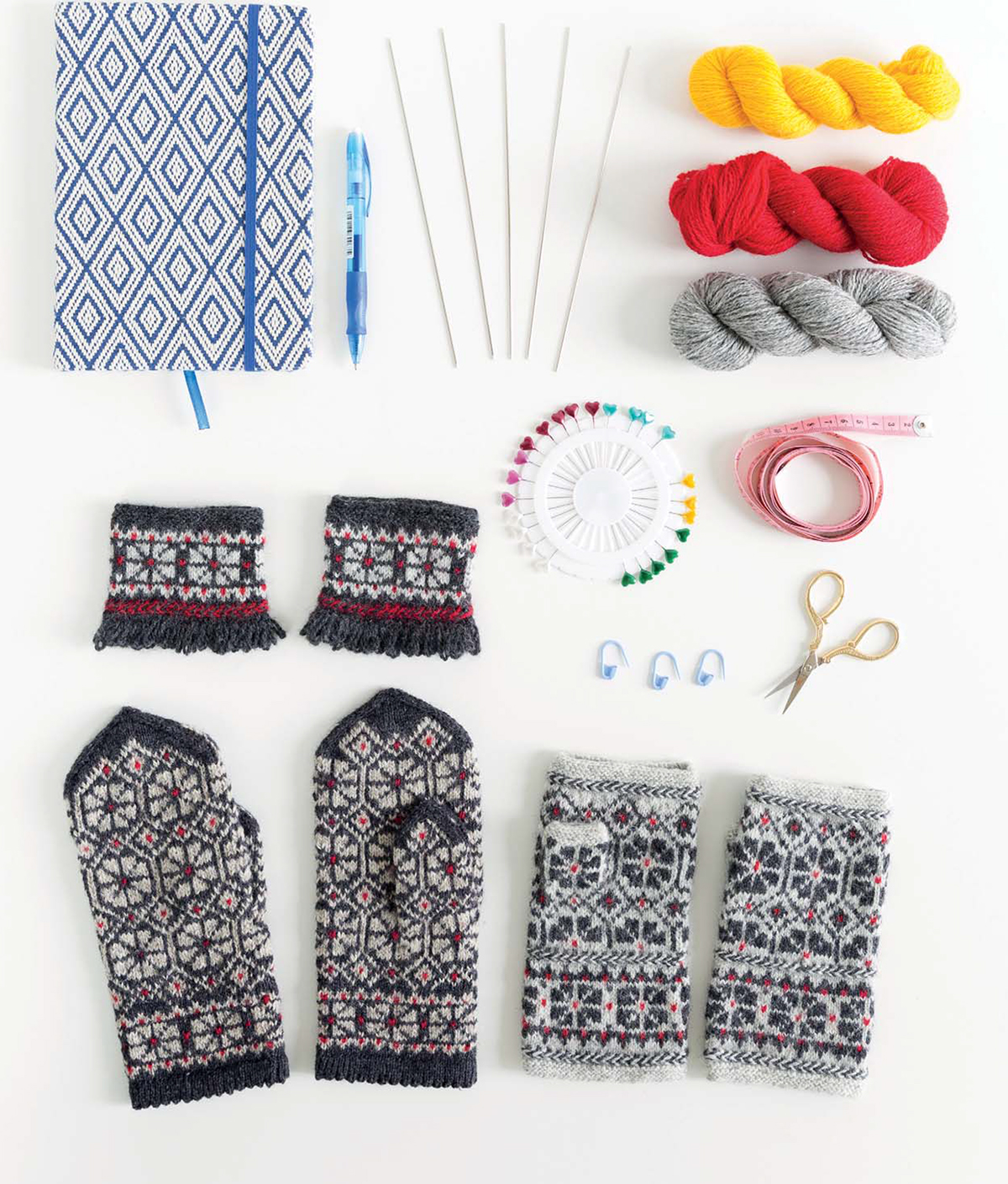
HOW TO USE THIS BOOK
BEFORE YOU BEGIN
Follow the steps below before starting to knit your mittens.
Read the section, which specifies the type of yarn required and recommended needle size.
Check your tension, following the instructions below and make a note of the needle size you need to use to achieve the required tension.
Choose your mitten pattern and decide if you are making the full mittens, fingerless gloves or wrist warmers.
Choose your yarn and colours, and make sure you follow the guidelines below to work out how much yarn is required for each colour.

